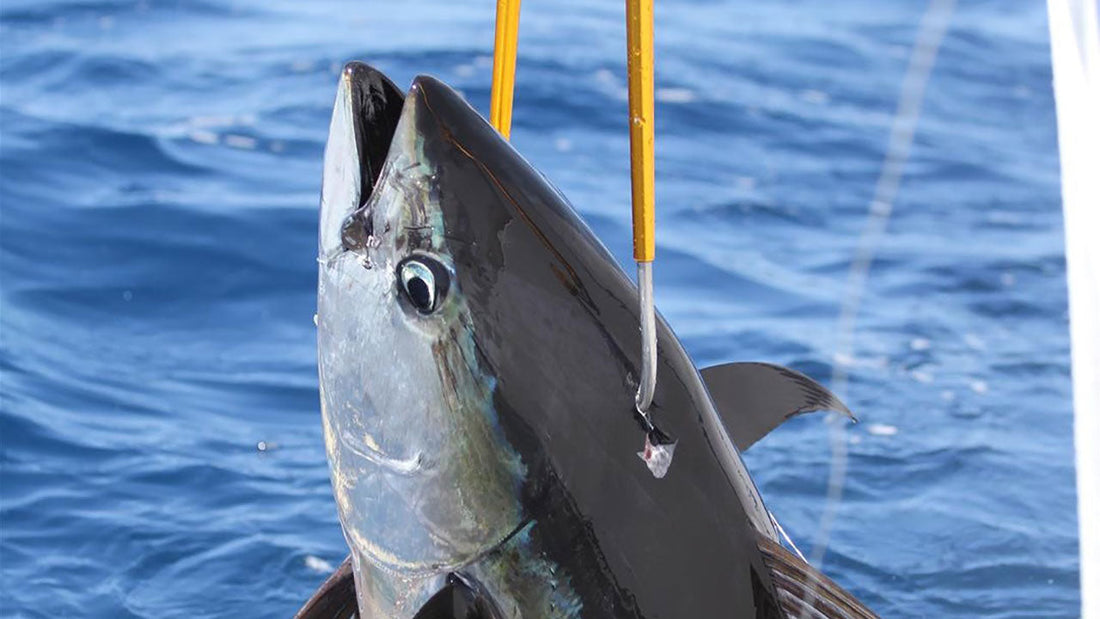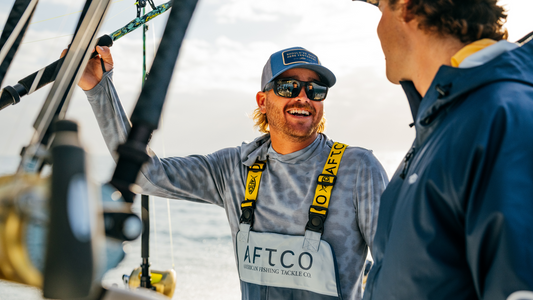
Gaff Hook: Options & Explanations
AFTCO's Greg Stotesbury breaks down your options for gaff hooks and explains what makes AFTCO Stainless Steel Gaff Hooks special.
Gaff Hooks: Aluminum & Fiberglass Gaffs
Gaff hook size is usually determined by the size and shape of the fish being most commonly gaffed. In general, fish under 50lbs only need a gaff hook with a gap measuring 2” to 3” to be effective, but on some species such as dorado, king mackerel, barracuda and other slim-bodied species, a 2” hook is almost always the best choice. Fish weighing over 50lbs should be gaffed using a 3” or 4” hook. This allows a bigger bite into the body of the fish and will result in less fish tearing off the hook. On some species such as sharks, large tuna and jumbo cobia, 4” or even our biggest 5” GFA586 gaff should be used. This is due to the soft flesh and tremendous power of cobia and tuna. Sharks have tougher flesh, but are notorious for twisting and thrashing their way off the gaff at boat-side.
Decoding Hook Measurements (using 3" x 3/8" as an example)
Hook Width
The first number in our hook size refers to the width between the hook point and the hook shaft. For example, on a 3” x 3/8” hook the 3” means a 3 inch hook gap between the point of the hook and the shaft of the gaff. The bigger the number, the bigger hook size and gap. As stated above, for fish under 50lbs or certain thinner species we recommend a 2” to 3” inch hook gap.
Hook Diameter
The second number in our hook sizes refers to the diameter of the hook shaft itself in 1/8” increments. The bigger the diameter the “fatter” the hook shaft diameter. In the example above, a 3” x 3/8” gaff hook has a hook shaft diameter of 3/8” or 6/8”, hence the “6” in the size number.
Gaff Hooks: Flying Gaffs
We make our flying gaff hooks in 4, 5, 6, 8, 10, & 13-inch hook sizes. That is the only measurement to consider when selecting flying gaff hook size. The hook size should be selected to be approximately ⅓ to ½ the width of the maximum body diameter of the fish to be gaffed. In other words, if the body of the swordfish, tuna, etc. being gaffed is about 2 feet in diameter at the shoulder where the gaff should be placed, the ideal gaff size would probably be 8 to 10 inches. This allows the gaff to get the maximum bite into the fish, while at the same time penetrating the backbone and vitals to quickly control and dispatch the catch.
All the above recommendations are general guidelines and may not apply in every circumstance or situation encountered on the water. All anglers and crew should exercise extreme care and caution whenever gaffing, landing or handling large game fish at boat side.









